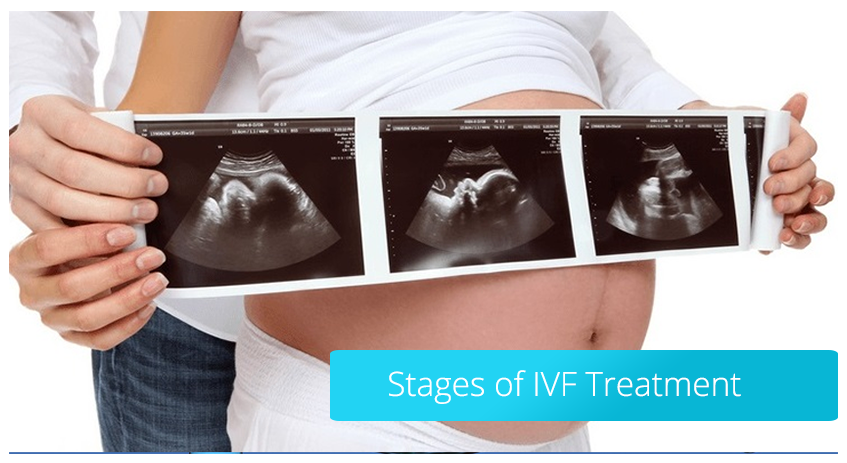The first stage of IVF treatment During the initial interview, your doctor will make a preliminary diagnosis and will decide which tests will be performed during the infertility investigation.
After the diagnosis is confirmed, Obstetrics and Gynecology Specialist Prof.Dr.Murat Arslan will determine a treatment plan according to your specific situation.
When the IVF treatment is decided, the ovary and uterus examination is performed first with the ultrasound evaluation of the patient. In this examination, which drug protocol is applied to the patient is decided. In patients with ovarian cysts, a detailed evaluation of the cyst should be performed before IVF treatment is initiated.
Step 1: Stimulation of the ovaries and monitoring egg development
The basis of IVF treatment is the complete control of the ovaries of the woman. For this purpose, some drug treatments are applied. The first step is to promote the development of eggs with IVF treatment drugs .
While IVF treatment drugs prevent you from ovulating before the desired time; nasal spray or subcutaneous injection . You will be given the necessary training to use yourself.
The success of IVF treatment depends on the large number of eggs produced in the female ovaries. For this purpose, the ovaries, which are kept under control with the aforementioned drugs, are stimulated with drugs that stimulate egg development. These drugs are subcutaneous or intramuscular injections.
The stimulation of the ovaries with these drugs takes about 10 days. During this process, you need to be checked several times to monitor your egg development.
In these controls, your ultrasonography is performed and if necessary, the hormone levels in your blood are checked and dose adjustment of your drugs is performed.
Step 2: Collecting Eggs
Step 2 of IVF treatment involves a small operation called follicular aspiration. This means getting eggs from a female body. The procedure is usually under anesthesia but does not require boarding. No pain is felt by the medications taken during the procedure. The procedure is performed with the help of a transvaginal needle and ultrasound used by the IVF doctor and the ovaries are reached. During the follow-up of the egg development, on the day it is determined that a sufficient number of eggs have matured, the eggs are injected to complete the last stage of development.
Egg collection is scheduled for 36 hours after this last drug injection.
During the collection of the eggs, sedatives, sleeping drugs can be given or the procedure can be performed under full anesthesia.
The procedure is similar to vaginal ultrasonography performed during your egg developmental follow-up. The only difference is that a needle attached to the vaginal ultrasound device passes through the vagina and collects the eggs inside your ovaries.
The average duration of the procedure is 30 minutes. Fertilization with sperm cells is carried out on the day the eggs are collected. After 2-3 hours of rest after the collection of eggs , the couple is discharged from the hospital.
After this stage of in vitro fertilization, double information is given about the drugs to be used.
Step 3: Creation of embryos by fertilization
The sperm of the man is combined with mature eggs. Sperm and eggs can be placed side by side and natural fertilization can be expected. If fertilization is unlikely, the medical team may decide to inject sperm into the egg. This process is known as intracytoplasmic sperm injection or ICSI. This method is used when it is thought that it may increase the chance of pregnancy.
Step 4: Embryo Development
After the eggs are combined with sperm, they are divided and the embryo is formed. Embryo development continues in incubators. The medical team will follow the embryos and make sure they develop. For five days, healthy embryos are divided into cells. Couples with a high risk of inherited disorder may consider PGD. This means pre-implantation genetic diagnosis.
This procedure is carried out three or five days after fertilization. The worker in the labarautu receives a sample cell from the embryo. He then sends this for examination for possible genetic diseases. American Reproductive Medicine Association, said that this treatment helps parents decide. He also reported that they could choose which embryo to prefer . This method will prevent the possibility of passing genetic disorders to children.
Step 5: Embryo Transfer
Before embryo transfer, which is the final stage of IVF treatment, information is given on the number and quality of the embryos to be transferred double .
The implantation of the embryo into the woman’s uterus usually occurs three or five days after egg collection and fertilization. The procedure is performed by the doctor placing the embryo in the uterus with the aid of a catheter. The embryo settles into the uterus or uterine wall. When this procedure is successful, pregnancy has occurred.
Here, multiple embryos can adhere to the woman’s uterus and cause multiple pregnancies. This means twins, or more babies. The number of embryos transferred is a mixed issue. It depends on the age of the woman and many factors. Unused embryos can be frozen or reused.
Click here to get detailed information about the stages of IVF treatment, which is a method used by couples who cannot have children!
Contact us for everything related to IVF stages and other infertility issues:
İstanbul Acıbadem International Hospital, Vaccination Center
Yesilkoy Mahallesi, Istanbul Caddesi No: 82, 34149 Bakirkoy / Istanbul
Are you looking for answers to all your questions about IVF treatment? You can get detailed information from 00902124684111 For IVF Appointment: 00905324986320
Acıbadem International Hospital
IVF Unit Coordinator Call Us: 00905324986320
You can ask your questions about IVF treatment stages by using the form below.



Add Your Comment